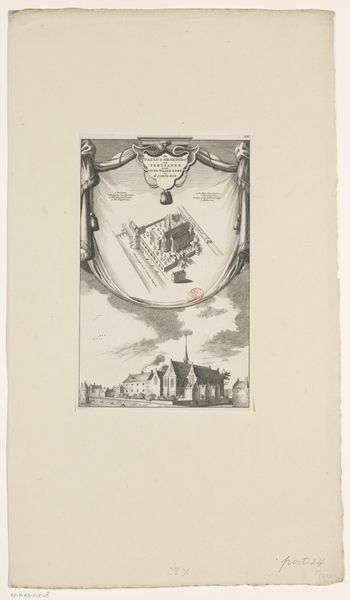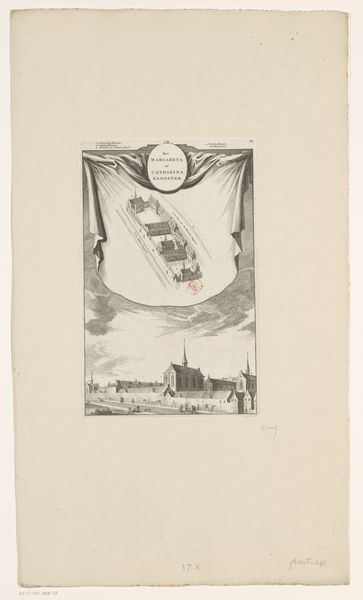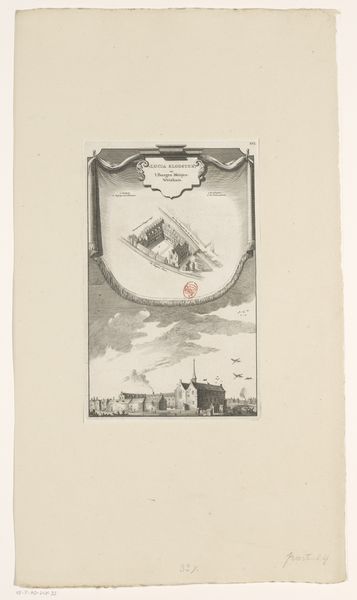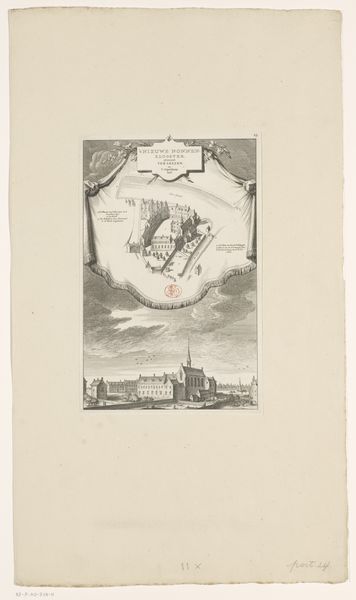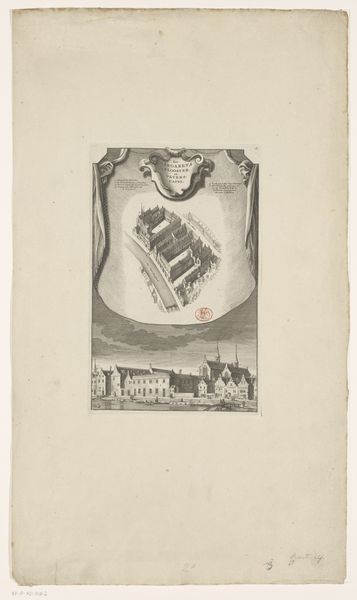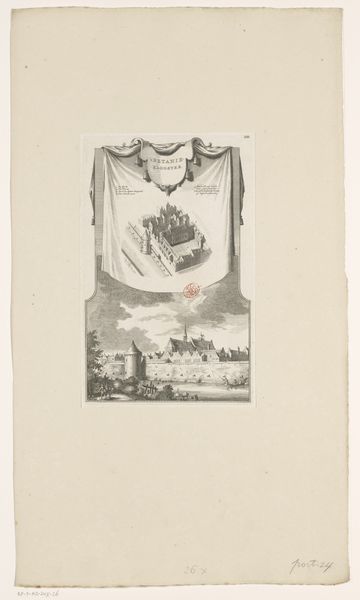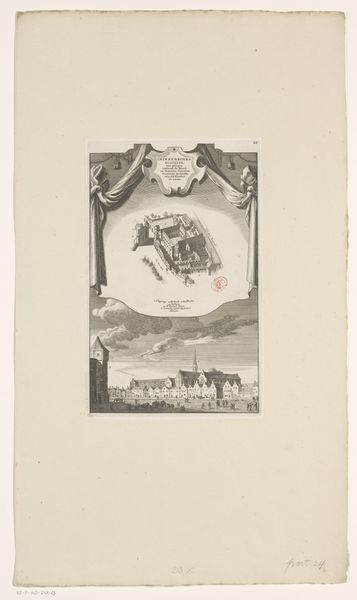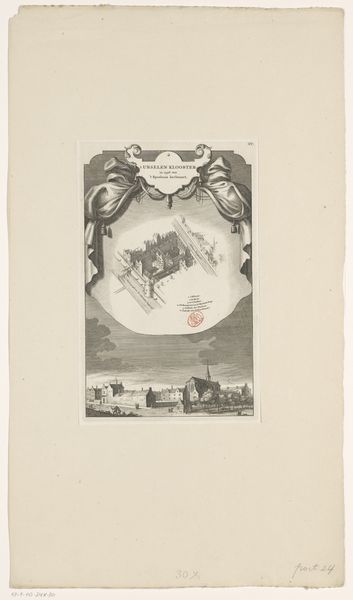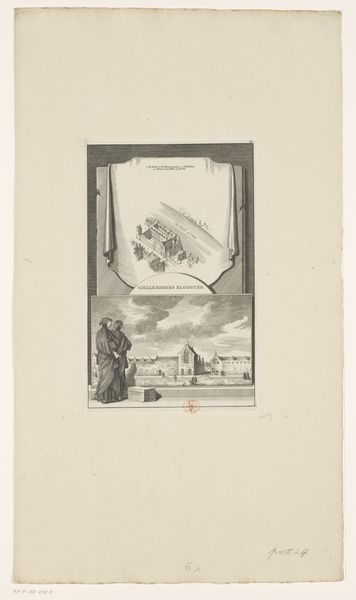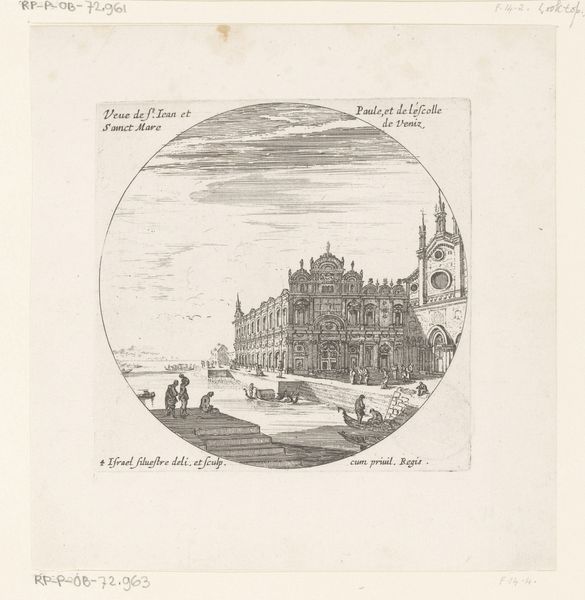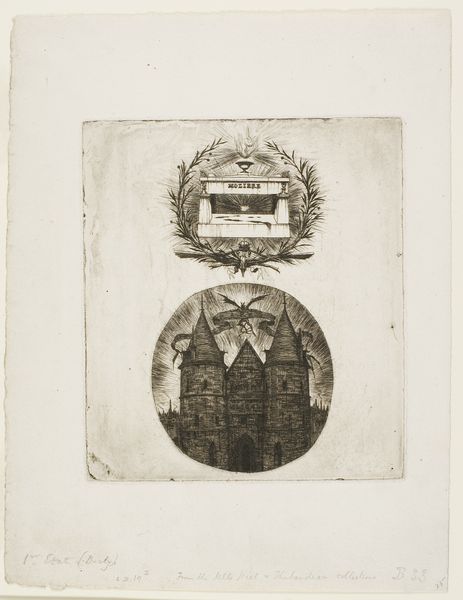
print, engraving, architecture
#
baroque
#
ink paper printed
# print
#
old engraving style
#
landscape
#
cityscape
#
engraving
#
architecture
Dimensions: height 279 mm, width 179 mm
Copyright: Rijks Museum: Open Domain
Curator: Looking at this engraving, I’m struck by how much detail they packed into the image. It's anonymous and dated to 1760. The piece, titled "Het Oude Nonnenklooster (Sint-Mariënveld) te Amsterdam, ca. 1544," depicts an old nunnery using ink printed on paper. What are your first impressions? Editor: It feels like a blueprint of power, doesn’t it? The lines are so crisp, but the scene is somber. You can feel the weight of institutional control embedded in the architecture. Curator: Absolutely. As a print, this work embodies reproducible knowledge. Consider the labour involved, translating the architectural form of the nunnery into a precise, disseminable image. The materials are straightforward, but the process is quite meticulous. We're seeing architecture mediated, commodified almost. Editor: That’s fascinating when you place it in the context of Amsterdam in 1760. This image, depicting the nunnery as it stood around 1544, evokes a nostalgia for a past that's fraught with religious and political upheaval. These spaces, especially those occupied by women, were sites of both refuge and restriction. To view it, one can't help wonder: for whom was this image created? What narratives was it meant to reinforce? Curator: Precisely! We have to acknowledge who funded and facilitated its creation and circulation. This wasn't simply about documentation; it was about perpetuating a specific interpretation of the past. Looking closely, the materials--the paper, the ink, the engraved plate—speak volumes. This print enabled a material and ideological form that spoke to particular tastes. Editor: I agree. The decision to use this specific printing technique suggests a desire for permanence and authority, especially as Amsterdam was shifting towards increasingly secular values. It’s an assertion of historical presence, reinforcing dominant social structures. And the "old engraving style" adds another layer, consciously aligning itself with a specific artistic tradition. Curator: It all comes back to production. This artwork, though seemingly simple in its composition, is complex and multilayered in meaning and speaks to the role of material culture in shaping collective memory. Editor: And, critically, challenging us to question whose stories get etched into our historical landscapes. Curator: Well said, prompting us to reconsider what gets represented and by whom. Editor: Indeed. A sober reminder to keep questioning what's not depicted too.
Comments
No comments
Be the first to comment and join the conversation on the ultimate creative platform.

